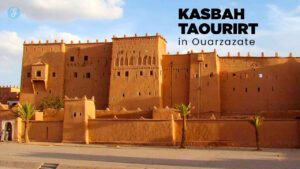Have you ever planned a trip across Utah and found yourself puzzled by the time zone changes? You’re not alone. Many travelers and even residents get tripped up by the shift from Mountain to Pacific Time as they journey across this beautiful state.
Here’s an interesting fact: Utah primarily operates under the Mountain Time Zone, adapting through both Mountain Standard Time (MST) and Mountain Daylight Time (MDT) during different parts of the year.
This blog is your guide to understanding everything about Utah’s time zone map. From how it affects daily life to comparing times in Salt Lake City with other major cities in Utah, we’ve got you covered.
Whether you’re planning a trip, doing business, or just curious about how time zones work in the Beehive State, this article will provide clear explanations without any fluff. Ready to never be confused about Utah’s time again? Keep reading!
The Time Zone Map of Utah

Utah sits mostly in the Mountain Time Zone, making timekeeping unique in this region. Keep reading to dive deeper into how this impacts life and schedules across the state.
Boundary Between Mountain and Pacific Time Zones in the United States
The boundary between the Mountain and Pacific time zones in the United States runs through several states, including Montana, Idaho, Oregon, Utah, Nevada, Arizona, and California. This line separates two major time zones that affect how people manage their schedules across this vast region.
The Mountain Time Zone follows UTC−7 or UTC−6 during daylight saving time changes.
Determining where one zone ends and another begins is critical for everything from travel plans to broadcasting schedules. For instance, cities just on one side of the boundary operate an hour ahead of or behind their neighbors across this invisible line.
This difference becomes essential when planning meetings or managing business operations that span these areas. Daylight savings adds another layer of complexity twice a year—spring forward or fall back—impacting everyone’s daily routine around these boundaries.
Daylight saving time changes
Utah switches to daylight savings time on the second Sunday in March. This shift moves clocks forward by an hour, from Mountain Standard Time (MST) to Mountain Daylight Time (MDT).
For 34 weeks—about 65% of the year—Utah operates under MDT. Residents and visitors need to adjust their schedules accordingly during this period.
As November begins, Utah returns to standard time on its first Sunday. Clocks roll back, providing an extra hour of sleep that night. Businesses and schools prepare for this change by adjusting operation hours.
Everyone looks forward to gaining more daylight in the evening during daylight saving months but also appreciates the return to standard time as winter approaches.
The Impact of Time Zone on Daily Life in Utah

Living in Utah means experiencing a unique time zone setup—Mountain Time (MT). This directly affects everyday activities, especially since the state observes daylight saving time.
Adjusting clocks forward or backward changes wake-up times, work schedules, and even when the sun sets. It’s not just about having more sunlight in the evening; it impacts students’ school routines and family dinners.
Seasonal shifts bring earlier sunrises or later sunsets that everyone has to adapt to.
Businesses operating here or communicating with partners across different time zones face their own challenges. Imagine scheduling meetings with colleagues on the East Coast or coordinating deliveries from the West Coast.
The difference in hours can make these tasks trickier than they seem at first glance. Plus, debating within Utah about sticking to daylight saving time year-round adds another layer of complexity for planning future activities and events.
Whether it’s personal life adjustments or business operations, the impact of being in Mountain Time Zone shapes daily realities for those living and working in Utah.
Comparing Time Zones: Salt Lake City and Other Major Cities in Utah
Diving into the heart of Utah’s time zone intricacies, it’s fascinating to see how Salt Lake City aligns with other major cities across the state. Despite Utah’s uniform adoption of the Mountain Time Zone (MTZ) and its adherence to daylight savings changes, the perception of time can significantly vary based on one’s routines and city life pace. Let’s break this down with a simple, informative table.
| City | Time Zone | Daylight Saving Observance | Notable Differences |
|---|---|---|---|
| Salt Lake City | Mountain Time Zone (MTZ) | Yes, observes DST | As the capital and most populous city, its bustling urban environment might make time feel as if it’s moving faster. |
| Provo | Mountain Time Zone (MTZ) | Yes, observes DST | Home to Brigham Young University, the academic calendar heavily influences the city’s time perception. |
| St. George | Mountain Time Zone (MTZ) | Yes, observes DST | Its warmer climate and leisurely pace provide a different temporal experience compared to more northern cities. |
| Ogden | Mountain Time Zone (MTZ) | Yes, observes DST | Rich in history and outdoor activities; time might seem to slow down here amidst nature and historical exploration. |
| Logan | Mountain Time Zone (MTZ) | Yes, observes DST | With Utah State University influencing city life, academic and seasonal events mark time significantly. |
In this concise snapshot, it becomes evident that while all major Utah cities align under the Mountain Time Zone and adjust their clocks for daylight savings time—starting on the second Sunday in March and ending on the first Sunday in November—their unique characteristics and lifestyles can alter residents’ perception of time. From the vibrant, fast-paced life in Salt Lake City to the serene, slow-moving days in St. George, each city offers a distinct experience within the same time frame.
Conclusion
Understanding Utah’s time zone journey offers a captivating insight into how our daily lives interconnect with the rhythms of time and geography. It reveals the complex dance between Mountain and Pacific Time Zones, enriched by daylight saving adjustments.
This exploration brings to light not only the quirks of local timekeeping but also sparks discussions on potential changes that may lay ahead. With each tick of the clock, Utah’s residents navigate their unique temporal landscape – a journey worth every second for anyone curious about the fabric of our shared moments.





























